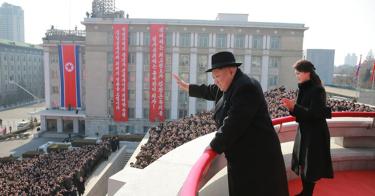In yet another move to intensify pressure against North Korea, the U.S. Department of the Treasury announced on Feb. 23 its largest tranche of sanctions against the Kim regime to date. Sanctions remain the primary component of the Trump administration’s maximum pressure and engagement strategy, which seeks to isolate North Korea from the international financial system and stem the tide of the country’s illicit missile and nuclear weapons programs.
This latest batch of sanctions targeted one individual, 27 entities and 28 vessels, many of which are located outside of geographic North Korea. Treasury’s Office of Foreign Assets Control (OFAC) also issued a global shipping advisory, increasing the risk of doing business with North Korean ships that engage in deceptive practices such as ship-to-ship transfers of various banned materials, including refined fuel and coal in an attempt to evade U.S. and international sanctions.
In addition to targeting North Korean entities, new sanctions target Chinese entities that help Pyongyang avoid the bite of sanctions. In spite of China’s verbal commitments to support and uphold U.S. and international sanctions against North Korea, it has often come to the aid of its ally.
As Anthony Ruggiero, Senior Fellow at Foundation for Defense of Democracies told Voice of America, the effectiveness of sanctions is contingent on “reining in the activities of Chinese companies who have collaborated with North Korea and North Korean brokers in China.” In targeting entities and vessels from China and other countries, the U.S. government took another step toward closing various loopholes that historically enabled North Korea to evade sanctions.
The Trump administration’s latest round of sanctions sent the right message: that the U.S. is committed to actualizing a policy of maximum pressure. But in spite of several rounds of designations, U.S. sanctions still fall short of maximum pressure. For example, the U.S. has yet to go after Chinese banks that continue to flout U.S. sanctions. The U.S. levied $12 billion in fines on European banks laundering money for Iran, but thus far stopped short of targeting Chinese banks that launder money at the behest of the Kim regime.
While the U.S. is focused on tightening the noose on Pyongyang, the Olympics provided a temporary reprieve when the United Nations (UN) and South Korea temporarily lifted sanctions to permit North Korean participation in the Olympics. Allowing North Korean athletes to participate in the Olympics is one thing, but permitting the participation of sanctioned North Korean officials Kim Yo-Jong, the head of the Worker’s Party’s Propaganda and Agitation Department, and Choe Hwi, the Chairman of the Sports Guidance Committee, is a bridge too far.
In many ways, the Olympics revealed tiny frays – even areas of significant disagreement – between the Trump and Moon administrations. While South Korea was entertaining North Korean leaders, Vice President Mike Pence led an Olympic delegation that included Fred Warmbier, father of the late Otto Warmbier, who was held captive by the Kim regime, later returned to the U.S. in a comatose state, and died less than a week later. The message from South Korea was one of engagement, while the message from the U.S. was one of accountability and condemnation of North Korea’s human rights abuses.
Moon is more eager than Washington for engagement with North Korea. He sought U.S. concurrence to postpone annual military exercises to minimize potential for regime provocations during the Olympics. He then sought special dispensation to allow sanctioned North Korean entities to attend the Olympics.
The Trump administration, while open to dialogue, has instead prioritized maximum pressure to induce Pyongyang to abandon its nuclear arsenal. Moon has adopted a more centrist policy toward North Korea than originally expected but concerns remain in Washington that his reconciliation efforts could undermine international efforts to pressure the regime for its repeated violations of UN resolutions.
Going forward, it is absolutely critical that the U.S. and UN close all the loopholes that have thus far permitted North Korea to evade some of the effects of sanctions. This will require a strategy that applies smart, targeted financial measures that hit North Korea where it hurts, while targeting third-party countries – especially, but not limited to, China – that aid and abet in North Korea’s attempts to avoid the consequences of sanctions.
Critical to a successful strategy toward North Korea is cooperation with its ally South Korea. As the Trump administration continues its implementation of a maximum pressure strategy in the wake of the Olympics, it should work with South Korea to ensure a synchronized policy that communicates unity in word and deed – not just to North Korea, but to the world.
This piece originally appeared in Forbes https://www.forbes.com/sites/oliviaenos/2018/03/01/the-not-quite-maximum-pressure-campaign-against-north-korea/#53fe3b5c31d7



